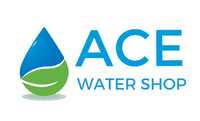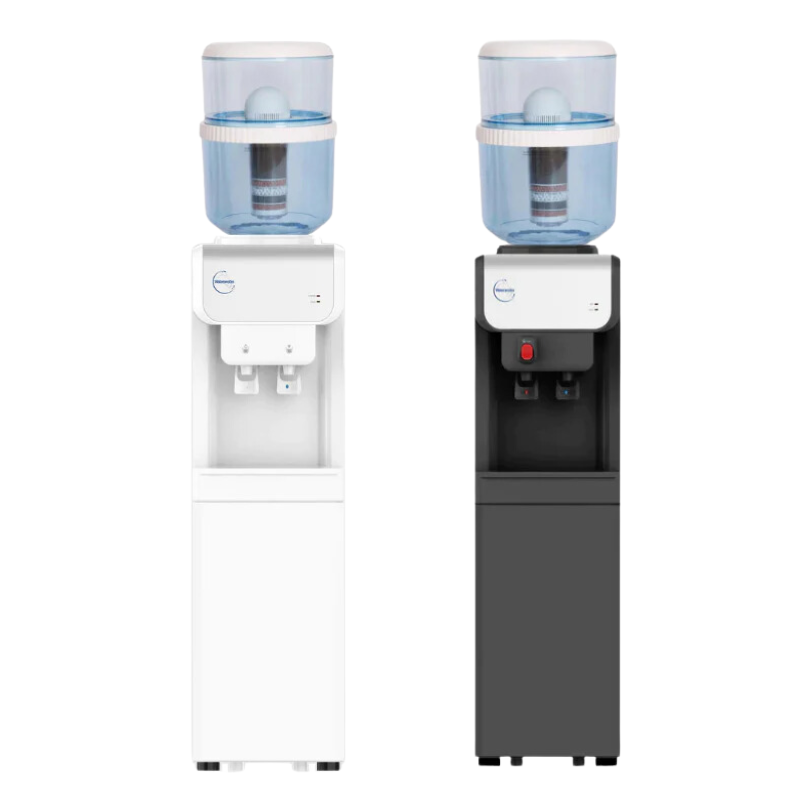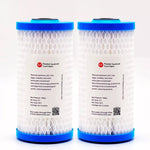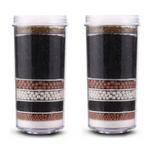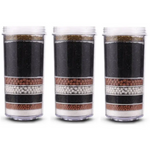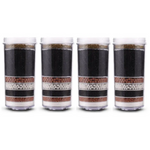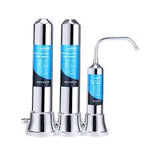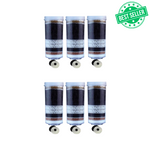You have no items in your shopping cart.
An activated charcoal water filter can significantly reduce taste, odor, and chlorine levels. It uses chlorine and chloramines in water treatment plants, which produce cancer-causing byproducts. These disinfectants stay in your drinking water for a long time, giving it a chemical taste. Carbon removes organic molecules from water, making it taste and smell better. Contaminants stick to a carbon filter's surface, and only pure water flows to your home.
HOW IT WORKS
Adsorbing contaminants is how carbon filters operate. Particles goes thorugh absorption in the same manner that a sponge absorbs water. Adsorption adheres to particles to a surface in the same way that Velcro does. Organic substances bind or cling to the surface of a carbon filter because water and pollution are both polar molecules that attract one another.
Because carbon filters are highly porous and have a large surface area, they effectively minimize undesirable tastes, odors, and other particles in water. When water passes through a carbon filter, it works as a parking lot for contaminants, with pores to enter. Pore size is measured in microns. The smaller the micron, the finer the filtering. When the flow rate and pressure are low, pollutants have more time to park or stick to carbon. The more time water stays in contact with the surface of a carbon filter, the more effective it is in filtering.
TYPES OF ACTIVATED CHARCOAL WATER FILTER
Granular Activated Carbon (GAC)
The term "fixed-bed carbon filters" refers to carbon filters with a fixed bed. GAC filters are GAC particle-filled cylindrical canisters. Water goes into the container, and the carbon particles that are loose filters contaminants as it flows through the system.
On the other hand, GAC filters are prone to channeling. When water enters the chamber, it travels through the container in the least resistance path. As a result, carbon particles bypassed by the water are underutilized, reducing the overall effectiveness of the filtration system.
The growth of microbes also connects to GAC filters. As water travels down the activated carbon's often traversed "channels," pockets of carbon and immobile water remain. These sluggish and filthy water areas create ideal circumstances for bacterial growth.
Carbon Block Filters
Filters made up of thickly-packed blocks of GAC and PAC particles of various sizes are known as solid carbon block filters. Water flows past the pores of the carbon block, and the small carbon particles in the filter eliminate a wide range of pollutants as it passes through.
The absence of channeling is the fundamental advantage of block filters when compared to GAC filters. The carbon particles in carbon block filters are immobile, and each particle is utilized to its full potential. The carbon adsorbs small pollutants, but bigger impurities are too massive to flow through the pores of the block and leave behind.
Carbon block filters are more effective and efficient than GAC filters. Still, they have one disadvantage: water takes longer to pass through solid block filters than carbon bed filters. It means that they aren't suitable for situations where a large amount of water needs filtration quickly, such as municipal water systems. On the other hand, this filter offers plenty of filtered drinking water per day for many households.
ACTIVATED CHARCOAL WATER FILTER TREATMENT PURPOSES
Activated carbon water treatment's primary purpose has two objectives, which act in very distinct ways.
Chlorine Removal:
It removes chlorine using activated carbon with little deterioration or damage to the carbon. Dechlorination happens quickly, and flow rates are usually rather high. However, this process necessitates a large surface area, and organics in the water will eventually clog the carbon pores. The activated carbon filter will need replacement since its ability to dechlorinate the water gradually deteriorate. Reactivation of spent carbon is possible. However, they should only use reactivated filters in waste-water treatment applications.
One of the benefits of air conditioning is that it has a low operating cost and is virtually "fail-safe" once installed. One downside is that because it removes chlorine from the top layer of the media, the AC creates a wet atmosphere conducive to bacterial development and proliferation. Bacteria can cause issues in medical applications and when it uses carbon as a reverse osmosis pretreatment.
Organic Matter Removal:
When water runs through an activated carbon filter, organic particles, and chemicals held inside by a process called "adsorption." Five important factors influence the adsorption process:
Activated carbon's physical properties (surface area and pore size distribution).
Carbon source's chemical composition (amount of hydrogen and oxygen).
The contaminant's chemical composition and concentration.
pH and temperature of the water
Duration of the water's interaction with the activated carbon filter (called empty bed contact time or EBCT).
HOW ITS PRODUCED
Thermodynamic Activation
It transforms the source material into activated carbon using hot gases in thermal activation. Also, it frequently uses steam after exposure to heat to assist open the pores.
We usually accomplish thermal activation through moisture reduction, volatiles reduction, carbonization, and steam treatment. It uses carbon dioxide, argon, or nitrogen to carry out this operation in an inert atmosphere.
Activation by Chemicals
Chemical activation involves the addition of chemicals to the raw source material before the carbonization process. The chemical is usually strongly basic, acid, or salt. The substance is then heated, and it instantly activates.
FINAL THOUGHTS
Activated Charcoal Water Filter is truly amazing when it comes to removing pollutants, odor, and unpleasant taste from tap water. Make sure to check it now! Ace Water Coolers offers carbon water filters and other water filtering needs in Australia.
